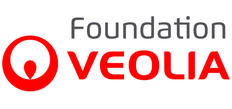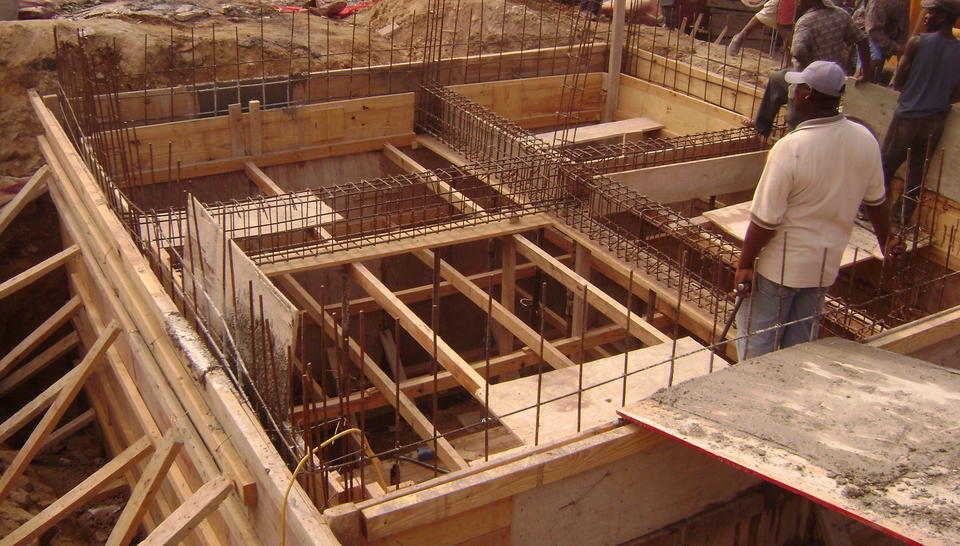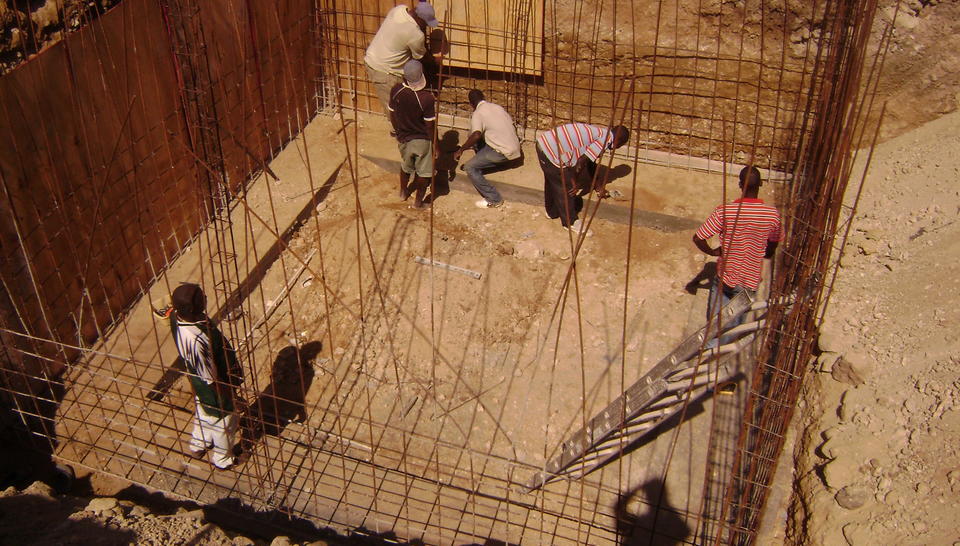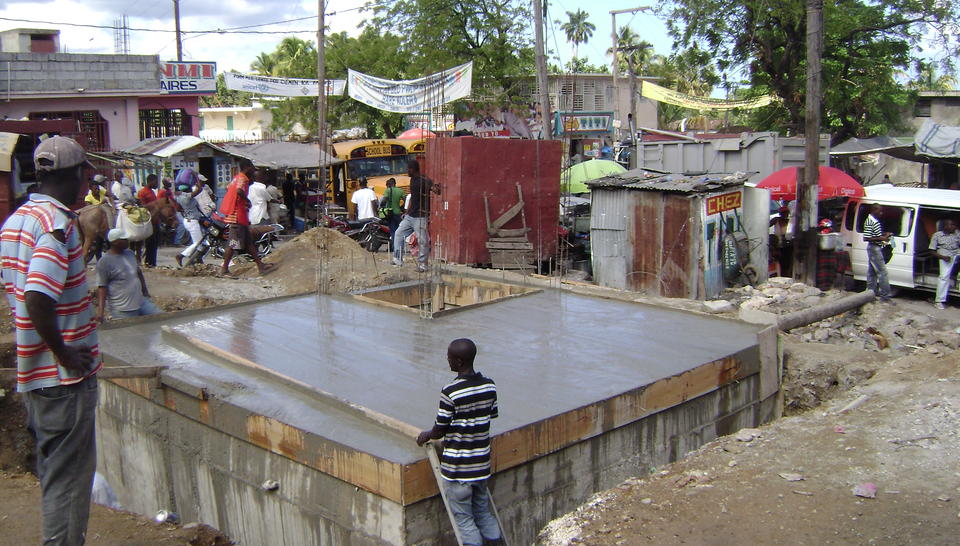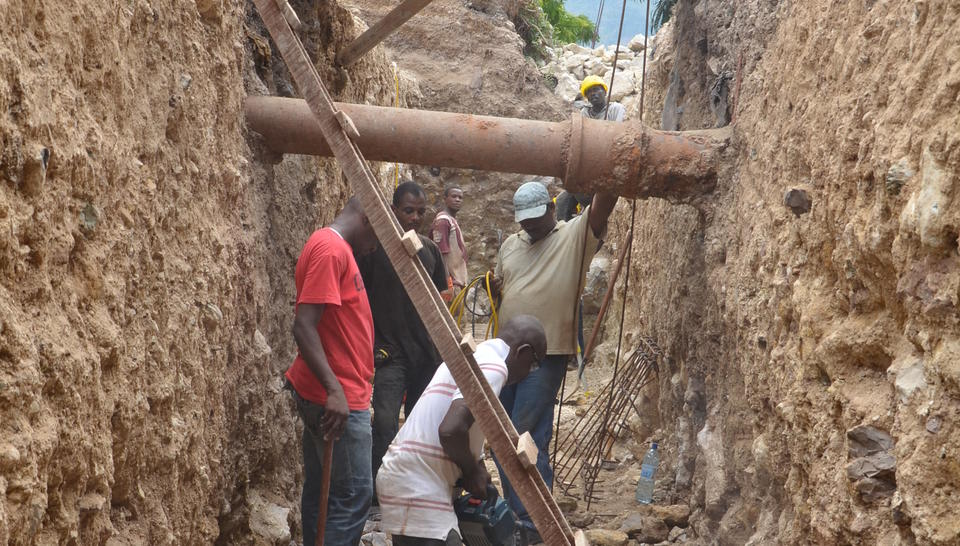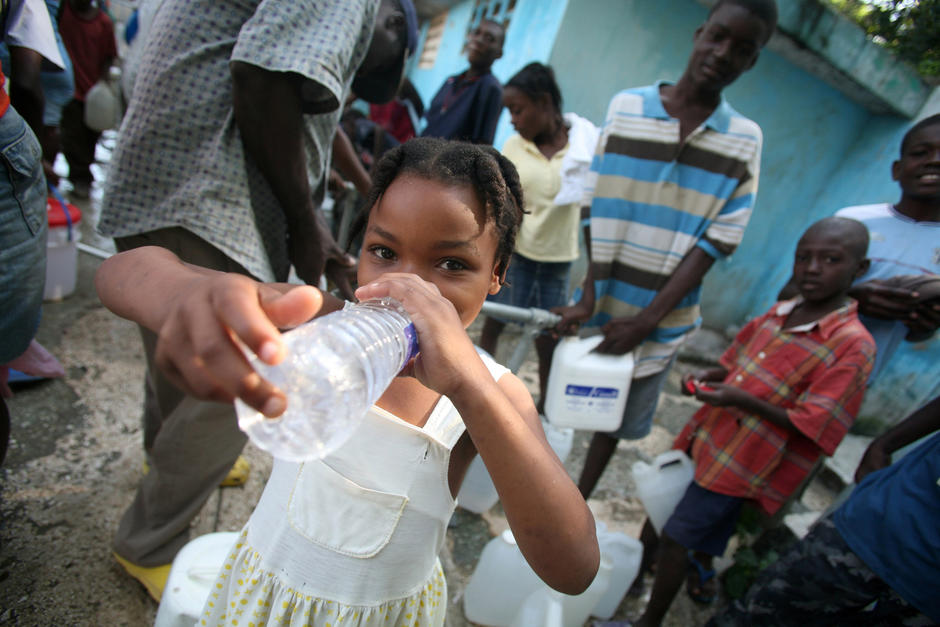
Humanitarian and Development
Location
Ouest department (Port-au-Prince, Petit-Goâve) and Artibonite department, Haiti
Dates
From 2010 January to 2013
Partners
French Red Cross
Action contre la Faim
Solidarités International
UNICEF
Responses to emergencies after the earthquake
Following assessments carried out by Veoliaforce volunteers and the French Red Cross emergency response team, the supply of drinking water was organized in two districts of the capital: Delmas and Cité Militaire. Aquaforce 5000 mobile units were deployed to supply water to the Haitian Ofatma hospital and a German Red Cross primary health center. In addition, 67 distribution points were set up, supplied by tanker trucks with water from wells still in operation.
Veoliaforce volunteers, working in support of Action contre la Faim, deployed two Aquaforce 5000 units: one in the Turgeau district and the other on the Champ de Mars, where they also built latrines to alleviate sanitation problems.
Finally, at the Noisy-le-Grand platform (93), where the Foundation stores its emergency supplies, a team of volunteers has been permanently on standby since the earthquake was announced, coordinating logistics and supplies.
The situation in April 2010
Three months after the earthquake in Haiti, the Veolia Foundation is still mobilized. While emergency missions are continuing, the teams are now trying to sustain their action with a view to gradually empowering local populations.
Since the beginning of the disaster, more than 270,000 people have been supplied with drinking water, thanks to the joint action of Veoliaforce and its partners.
Veoliaforce volunteers are still working alongside the French Red Cross emergency response team, but this time with a view to ensuring the sustainability of projects. At the end of March 2010, a drinking water network expert was deployed in Port-au-Prince to ensure the continuity of drinking water distribution throughout the city, and to ensure the sustainability of the distribution points set up by the French Red Cross during the first emergency phase.
At the same time, in-depth actions are being carried out in the Haitian capital and outlying towns.
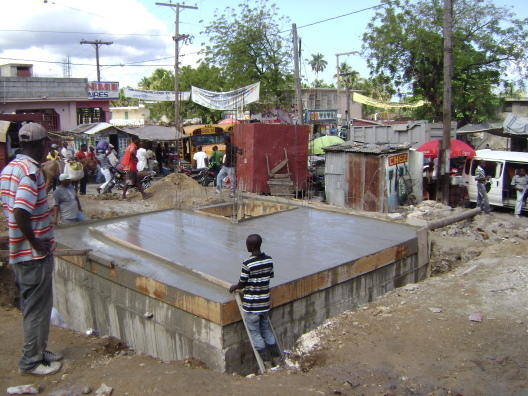
In early March, two expert chemists were sent to Port-au-Prince for three weeks to support local teams. Their main mission was to advise and reinforce the DINEPA (Direction Nationale de l'Eau Potable) teams.
The volunteers also carried out sampling campaigns using mobile laboratories to test water quality, and set up a monitoring plan. Two other volunteers will take over from them to ensure the continuity of this major project.
Two drinking water network experts have been deployed to Petit-Goâve, 58 km south of Port-au-Prince. Supporting the French Red Cross, they assessed the damage caused to the network, and proposed rehabilitation measures to the authorities.
Response to the cholera epidemic of October 2010
Following a cholera epidemic that broke out in mid-October 2010, the Veolia Foundation remained mobilized, providing technical support for the rehabilitation of water and sanitation network equipment.
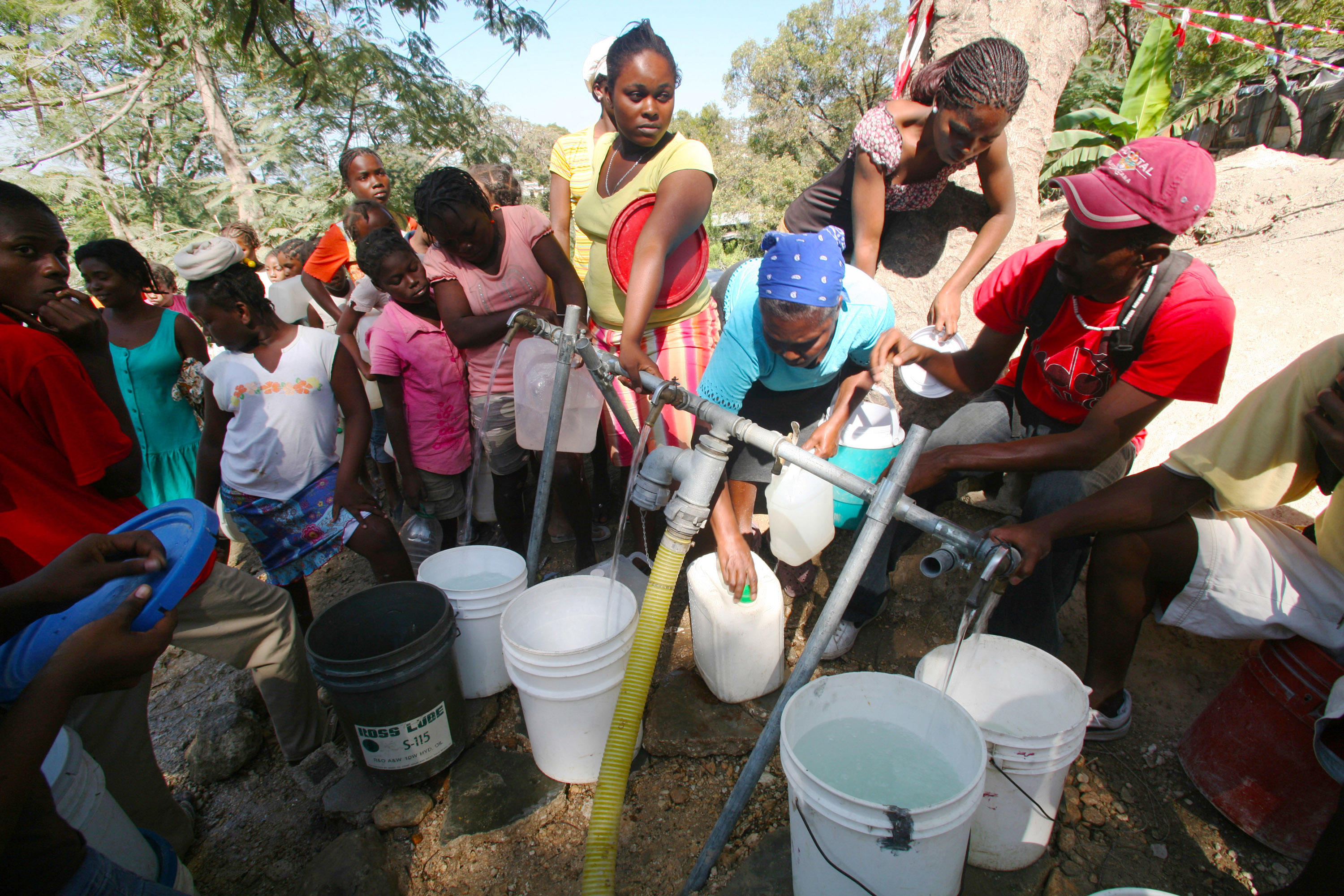
At the same time, the Foundation carried out assessment operations in response to the cholera emergency.
Two volunteers went out into the field to take part in actions set up by our partners. One took part, with UNICEF and DINEPA, in the development of a program for decentralized management of information on access to water and sanitation in the country. The other, with the French Red Cross, worked on a program to improve water supply to the first areas affected by the epidemic, in the Artibonite department.
These two assessment missions subsequently proved useful, and our partners, who are still on site, are continuing their efforts to improve drinking water supplies.
Finally, in December 2010, a third volunteer left at the request of the International Federation of the Red Cross to help draw up its response plan to the cholera epidemic. This document defines the objectives to be achieved by the Federation over the next twelve months, and is intended to encourage donations from Red Cross patrons.
Haiti 2010: emergency and post-emergency figures
Over 20 tonnes of equipment sent into the field
270,000 people supplied with drinking water
46 volunteers involved
Water network rehabilitation program in Petit-Goâve, Haiti
Since 2010, the Foundation has been working tirelessly to meet the water access needs of disaster victims.
After the emergency and post-emergency actions undertaken in Port-au-Prince in the months following the disaster, it chose to perpetuate its approach by laying the foundations for a development project in the coastal town of Petit-Goâve, in partnership with the French Red Cross and the national drinking water and sanitation department (Dinepa). The project was made possible by donations from Group employees, collected by the foundation after the disaster, and the skills of volunteers from the Veoliaforce network, who helped rebuild the country's infrastructure.
Eight volunteers took turns on site for two years to provide the 56,000 Haitians of Petit-Goâve with a new drinking water network.
A preliminary audit of the town's water network, carried out in 2010, enabled us to assess the existing system and design a suitable renovation project, with the aim of improving the drinking water supply to the urban area and ensuring the long-term viability of the installations. The work was undertaken in 2011 and 2012.
The reservoir was modified to include a chlorination and metering system and, at the same time, some forty kilometers of pipe were routed and installed to rebuild the network.
At the end of 2012, volunteers left to train Dinepa and Snep staff in network installation techniques, leak detection and chlorination, enabling them to maintain the network after their departure. The project was inaugurated in the presence of the Director of Dinepa on November 28, 2012. This successful example of water network rehabilitation could eventually be duplicated by Dinepa in other medium-sized towns in Haiti.
Petit-Goâve's new drinking water network in figures
Petit-Goâve is a coastal city 68 km south of Port-au-Prince
8 volunteers involved
Over 50,000 Haitians benefitting from a new water system (in Petit-Goâve)
Reconditionnement des unités de traitement d'eau à Port-au-Prince
En avril 2012, un volontaire s'est rendu à Port-au-Prince pour reconditionner les unités de traitement d'eau envoyées sur place après le séisme et former les collaborateurs de la Croix-Rouge haïtienne à leur usage. Ces unités ont été données par la fondation à la Croix-Rouge afin de prépositionner du matériel et des hommes formés à leur utilisation en cas de nouvelle catastrophe.
Stepping up the fight against cholera - Haiti
December 2012 - February 2013
At the request of the French Red Cross, several Veoliaforce volunteers left at the end of 2012 to help emergency response teams deployed in the Grande Anse department. They secured the water supply and sanitary coverage of cholera treatment centers, and took part in hygiene awareness campaigns aimed at the local population. Thanks to Veoliaforce, more than 20 centers in the south of the country have been taken care of.
